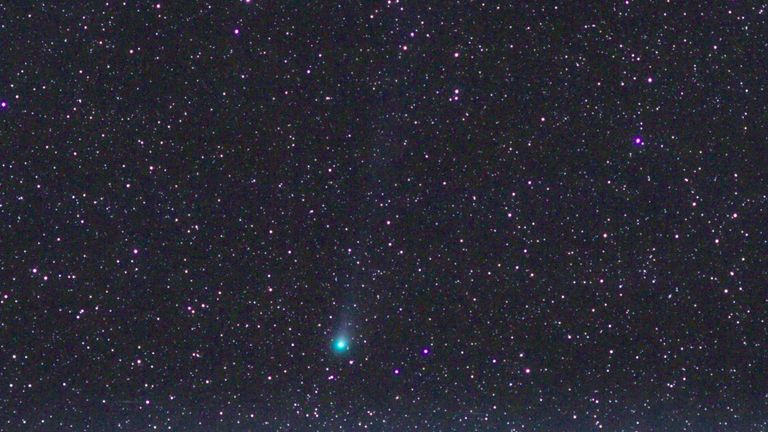Is it a bird? Is it a plane? No – it’s a comet that has been spotted from Earth for the first time in 71 years.
The 12P/Pons-Brooks comet is growing brighter and is now visible in the night sky – but you’ll still need binoculars or a telescope to see it.

A composite photo of the comet taken in Cumbria. Pic: PA/Stuart Atkinson
However, it may be visible to the naked eye in the coming weeks.
It has already had several outbursts of activity, according to Dr Megan Argo, an astrophysicist at the University of Central Lancashire.
“If we’re lucky, it may have another in the next few weeks as it passes through the sky,” she said.
The comet, named after its discoverers Jean-Louis Pons and William Robert Brooks, spends most of its time in the outer reaches of the solar system, where it is very cold.
It comes back to the inner solar system – passing by Earth – every 71 years and is known as a periodic comet because of this.
Comets are mainly made up of dust, rock and ice.
Dr Argo said: “You can think of them as a bit like giant dirty snowballs.”
As the comet gets close to the sun while passing through the inner solar system, the heat causes the ice to melt straight to gas – through a process called sublimation – and some of the material is lost from the surface.
“This gas forms both a cloud around the solid nucleus of the comet – known as the coma – and a tail of material that can stretch many millions of miles in space,” Dr Argo said.
Read more on Sky News:
Manhunt after two ‘crossbow attacks’ believed to be linked
United Airlines flight missing plane panel on landing
Welsh rugby player on NFL dreams
“The tail is made of gas and dust that has been pushed away from the comet by the power of the solar wind streaming from the sun, and this tail is the bit that can become spectacular in the sky as seen from Earth.”
Dr Argo said that while 12P/Pons-Brooks is developing a nice tail, it is “not quite visible without binoculars or a telescope just yet”.
For those looking to spot the comet, it is below – and slightly to the left – of the Andromeda Galaxy.
The best way to see the comet is to find a place with dark skies and no tall trees, buildings or hills to block the views, astronomers say.






